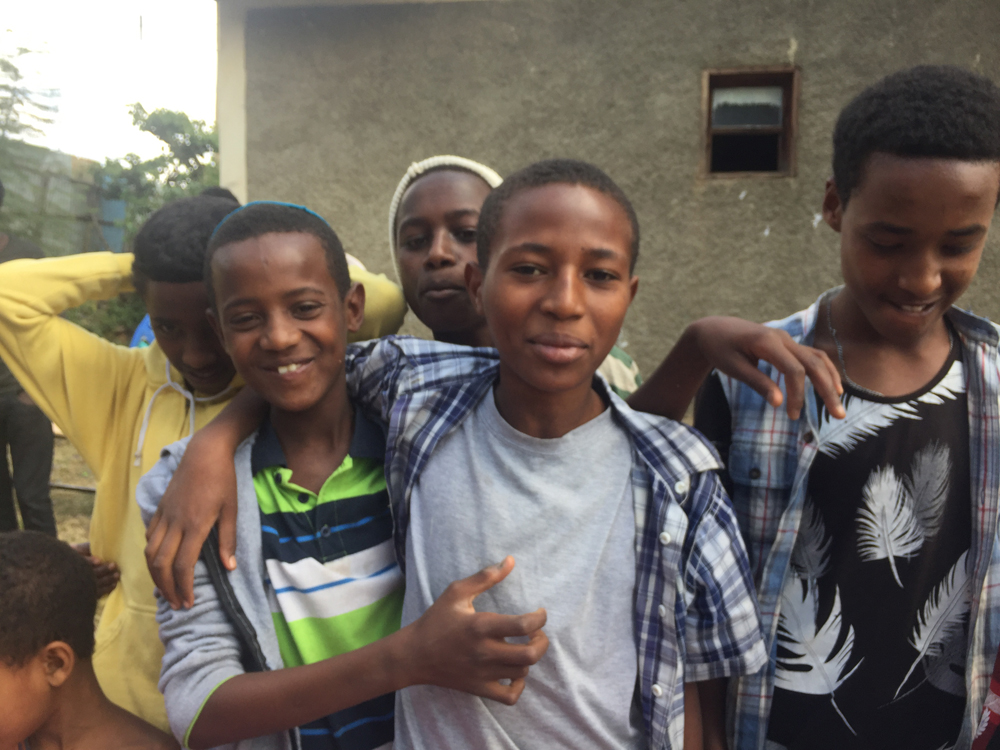Being in Ethiopia, after dreaming of visiting the country for years, was wonderful. Being there in the company of 20 loquacious Londoners of various Jewish persuasions was even better: a journey of constant dialogue and learning. With Rabbi Sybil Sheridan of West London Synagogue and Abye Tilahun Lakew of local Jacaranda Tours as our guides, we saw vast stretches of the country’s north.
Making a circuit from Addis Ababa via Bahir Dar, Gondar, Axum and Lalibela, we visited numerous monasteries, churches and crepuscular museums. On one morning we left our hotel at 7am and spent eight hours riding through the Simien Mountains, a heart-stopping drive around hairpin bends in this UNESCO World Heritage Site with breathtaking views. On the penultimate day we flew from Lalibela – site of the subterranean rock-hewn churches of Ethiopia’s ancient “New Jerusalem” – to the teeming capital. Before departure, Sybil sent out notes about the Jews in Ethiopia, from their origins to the massive airlifts of the Beta Israel (Ethiopian Jews) to Israel in the 1980s.
Approaching Gondar by bus, Sybil explained the Israeli political and religious debates that mean approximately 9,000 people who identify as Jews remain essentially stranded in Ethiopia. These Zera Israel, some of whose forebears converted to Christianity in the 19th century to avoid persecution, are thus ineligible for immigration to Israel under the Law of Return.
We arrived in Gondar in time for the outdoor Kabbalat Shabbat service supported by Meketa, the British-based charity Sybil co-founded with Hila Bram. After listening to joyous singing by some 60 kids, we unloaded our gifts. Books, pens, chalks and set squares got applause, but the sack of deflated soccer balls, plus pumps, earned an enthusiastic roar. That evening and next morning we attended Shabbat at the community synagogue; an open-sided metal building in which the men and women sit, either side of a mechitzah (partition), on metal benches on a bare mud floor.
One afternoon stays indelibly in my mind: our visit to a compound in Gondar’s Jewish Quarter. Corrugated metal doors along a narrow alley admit to windowless mud houses, no more than 10ft x 10ft, in which as many as six people (adults and children) live, without running water, a lavatory or indoor cooking facilities. In the home I visited, all the family’s clothing was piled inside a plastic bag in one corner, its contents barely discernible in the darkness. Our host welcomed us and, translated by a community member, answered our questions, her smile sometimes slipping into unfathomable melancholy. These Jews had upped and left their farms and villages over a decade ago, anticipating imminent departure to Israel, but have been waiting ever since. Subsisting on day-labour income, they pay significant rent for hovels of a kind that brought to mind photographer Jacob Riis’s 1890 New York exposé, How the Other Half Lives.
But even there, amid the mud, dust and poverty, was an atmosphere of love, warmth and social connectedness. The children, beautiful and bubbly even in their motley outfits, were eager to walk with us, hand in hand, down the cobbled hill back to our bus.
If it’s possible to fall in love with an entire community, that’s what happened meeting the Jews of Ethiopia — Jews by their own demonstrative practice and devotion, regardless of what authorities may say — on this memorable trip.
Janet Abrams is an artist and writer originally from London, but currently based in Santa Fe, New Mexico. www.janetabrams.com
Photos by Janet Abrams




